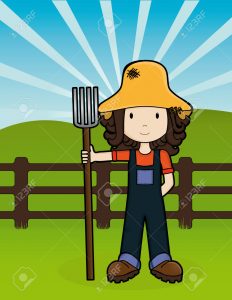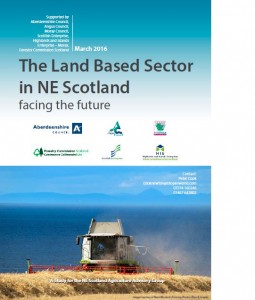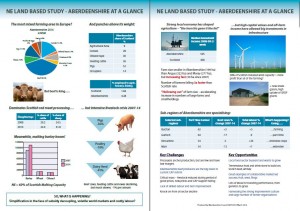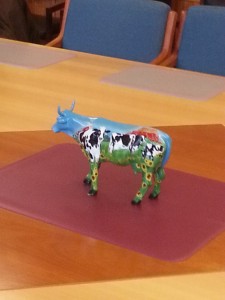In 2016, the Scottish Government’s Rural and Environment Science and Analytical Services Division (RESAS) commissioned research on ‘Women in Farming and the Agriculture Sector’. The overall purpose of this research was to establish a baseline position on women in farming and the agriculture sector, which then will inform future policies to enhance the role of women in these sectors.
The specific aim of this research project is to investigate the role of women in farming and the agriculture sector in Scotland under five headings: daily life, aspirations, career paths, leadership and comparative analysis with women in other family businesses. During the research, the importance of inheritance, training and farm safety also emerged as important issues.
The research was comprised of literature review, 9 focus groups, 30 interviews and two on-line surveys: in total, over 1300 women and 12 men from across Scotland participated. The research was undertaken from June 2016 to March 2017.
Key Messages:
Women play a major role in Scottish agriculture, participating in the full range of farming activities.
The cultural practice of passing on large farms intact to one son is the single biggest barrier to women’s entry into agriculture. This means land transfer is institutionalised culturally (i.e. it is a hegemonic practice) but not legally (i.e. there is no legal restriction against multiple inheritance or bequeaths to daughters).
Women are very under-represented amongst the elected leadership of national-level farming organisations (e.g. although over 1/3 of farm operators are women, the NFUS has no women amongst its national office holders, regional board chairmen or committee chairmen.
However, about half of NFUS staff are women). Women have more proportionate elected representation in the Scottish Crofting Federation (where 3/9 board members are women).
Most survey respondents would like to see more women involved in leadership of farming organisations, but only about 1/3 were personally interested in becoming more involved in leadership themselves.
Lack of time is a major barrier to advancing women’s roles on-farm and in farming organisations, and to accessing training (including continuing professional development, knowledge sharing, farm visits and industry events). Women in agriculture are very busy, juggling family responsibilities, farm work, housework, off-farm employment and volunteer work.
Some respondents reported exclusionary practices that take place in farming organisations (e.g. the unlikeliness of women being elected to committee positions; women being asked to leave meetings once the social elements were finished).
Approximately 18% of main survey respondents identified ‘Not welcome by existing male leaders’ as a barrier to their participation in leadership of farming organisations.
The Scottish Association of Young Farmer Clubs (SAYFC) was the most common provider of leadership experience to women in Scottish agriculture.
There is a clear need for more access to, and uptake of, vocational, practical training for women entering agriculture, across a range of topics.
Enabling new entrants to establish farms also enables more egalitarian gender relations. This and other research shows that when men and women enter agriculture together (through buying/ renting together at the outset) more equal gender relations exist.
Approximately 29% of survey participants expressed an interest in developing farm diversification activities in the next five years. This interest was particularly marked amongst crofting respondents (38% expressed interest in developing diversification activities).
Women and men engage in many unsafe farm behaviours as a result of different demands and activities not accounted for in recommendations on safe practices.
Women in family businesses outside of agriculture face far fewer barriers to business involvement and leadership.
Scottish Government’s concerns about recognising the role of women in agriculture are similar to those shared by the European Union and national governments (e.g. Australia, Northern Ireland).
Key Recommendations:
The cultural practice of passing on large farms intact to one son needs to be challenged. Other models should be explored (e.g. in the rest of Europe it is not possible to disinherit other children). Increasing the discourse on inheritance practice (e.g. in farming organisations and the farming press) can lead to change in practices.
Succession planning is poor and families are reluctant to discuss it together. Access to professional advice on succession planning, as well as awareness raising and support, should be offered to all members of farm families.
The practice of only having one named tenant on a croft should be revisited to critically evaluate the gender implications. In an instance of divorce, spouses can lose access to the family home on the croft.
Conscious and unconscious bias needs to be addressed in farming organisations. A programme of measures is necessary and the following are recommended:
- A 30% quota system for farming organisation boards and committees
- Mechanisms to enable progression from the SAYFC to the National Farmers Union of Scotland Council (e.g. mentorship, establishment of a ‘young farmer’ or ‘new entrant’ council position).
- Establishment of a ‘talent bank’ of suitably qualified women for farming positions (identifying their skills and interests, offering training opportunities, and encouraging farming organisations to recruit from this pool when positions became available).
- Identifying women mentors to support male and female apprentices
If women-only networks and activities are supported, this should be through mainstream farming organisations, and not as separate fringe events.
Practical, hands-on training programmes need to be developed and made accessible to women through flexible scheduling, childcare availability and on-line components. Topics of primary interest to study participants included: livestock husbandry, animal health, accounting, business entrepreneurship, large vehicle driving, environmental protection and legal compliance.
Women should be supported to pursue a range of farm diversification opportunities, at a variety of scales.
More land should be made available for new entrants (e.g. on Crown Estate Scotland land, from large estates (of all ownership types), and through a ‘matching service’ with older farmers).
To increase farm safety, financial incentives, for farmers to purchase equipment appropriate for women and to encourage the use of childcare facilities, should be developed. Further research is needed to consider how to plan a farmyard for women and ageing farmers.








